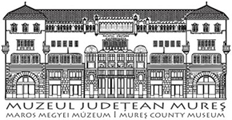Marisia - Maros Megyei Múzeum Évkönyve 33/4. (2013)
Articles
ANOTHER EARLY IRON AGE ZOOMORPHIC CLAY FIGURINE FROM TÁRGU MURE§ SÁNDOR BERECKI Keywords: zoomorphic figurine, porcine, Iron Age, Tärgu Mure? Cuvinte cheie: figurinä zoomorfa, porcine, epoca fierului, Tärgu Mure? Clay figurines are frequent finds in Early Iron Age sites. The pieces of information regarding these artefacts frequently are limited to their mentioning and/or illustration, however several syntheses, analytic and experimental studies have also been written. On the margin of a recent discovery from the fortress in Tärgu Mure$ the paper brings into discussion (again) the Early Iron Age zoomorphic clay figurines. The prehistoric materials from the archaeological layers in the fortress from Tärgu Mure? are scarce due to the landscaping and earth works of the later periods. Only a few prehistoric features were revealed, since the establishment of the Franciscan friary and then the buildings of the medieval and modern town, followed by the constructions of the Austrian Army heavily disturbed the layers from earlier periods. The first settlement on this terrace situated on the left bank of the Mure? River dates from the Neolithic Starcevo-Cri?-Körös culture;1 from this period a few hearths, clayed platforms and pottery were found. From the soil above the Stone Age layer, finds from the Wietenberg and Noua cultures were unearthed,2 followed by the Early Iron Age layer and the correspondent few features. After the beginning of the first millennium BC the terrace was inhabited again at the beginning of the first millennium AD by Romans and communities from the migration period.3 During the excavations from the last years several Early Iron Age figurines were revealed. In 2011, a clay figurine representing a horse was found,4 followed by further figurines in 2012. Tire present paper presents one of these clay finds from the last year. The fragmentary clay figurine is brown coloured; because of the uneven firing its colour is lighter on one side and darker on the other. Its 1 Рейса - Molnár 2000. 2 Рейса - Apai 2003. 3 Körösfői 2009. 4 Berecki 2012. surface is rough, it was tempered with crushed potsherds and chaff, thus pores can be observed on the surface of the object. The two legs on the right side are broken, the legs on the left side are conical, as well as the two ears. The mane is indicated by a rib drawn from the paste, which starts between the two ears in the front and has an oblique trajectory, ending on the right side of the rump. The representation is highly schematic; the anatomical characteristics of the animal can hardly be defined. The determination of the species is also made difficult by the fragmentation of the figurine: the frontal, head part which might greatly help in the classification, is missing. Even so, considering the mane and the analogies, one may define the figurine as a representation of a wild boar. Conditions of discovery; Tärgu Mure?Fortress, 2012/C41a, -120 cm. Dimensions: length: 28.75 mm; frontal height: 19.31 mm; dorsal height: 23.76 mm; ears’ length: 5.65 mm; length of frontal legs: 8.02 mm; length of dorsal legs: 8.76 mm; length of the mane: 23.88 mm. Weight: 5.95 g. Tire clay figurine is very schematic and rough, like the majority of the figurines from this period.5 Regarding the details presented on the representations of wild boars one can observe that - excepting two of the finds from Lechinfa de Mure?, where the tusks are also represented6 -only the ears are modelled on the head, without further details.7 5 Vasiliev 1986, 80. 6 Horedt 1963, Abb. 2/3, 5. 7 Ursache 1999, 43. MARISIA XXXIII, 2013, p. 7-11.
